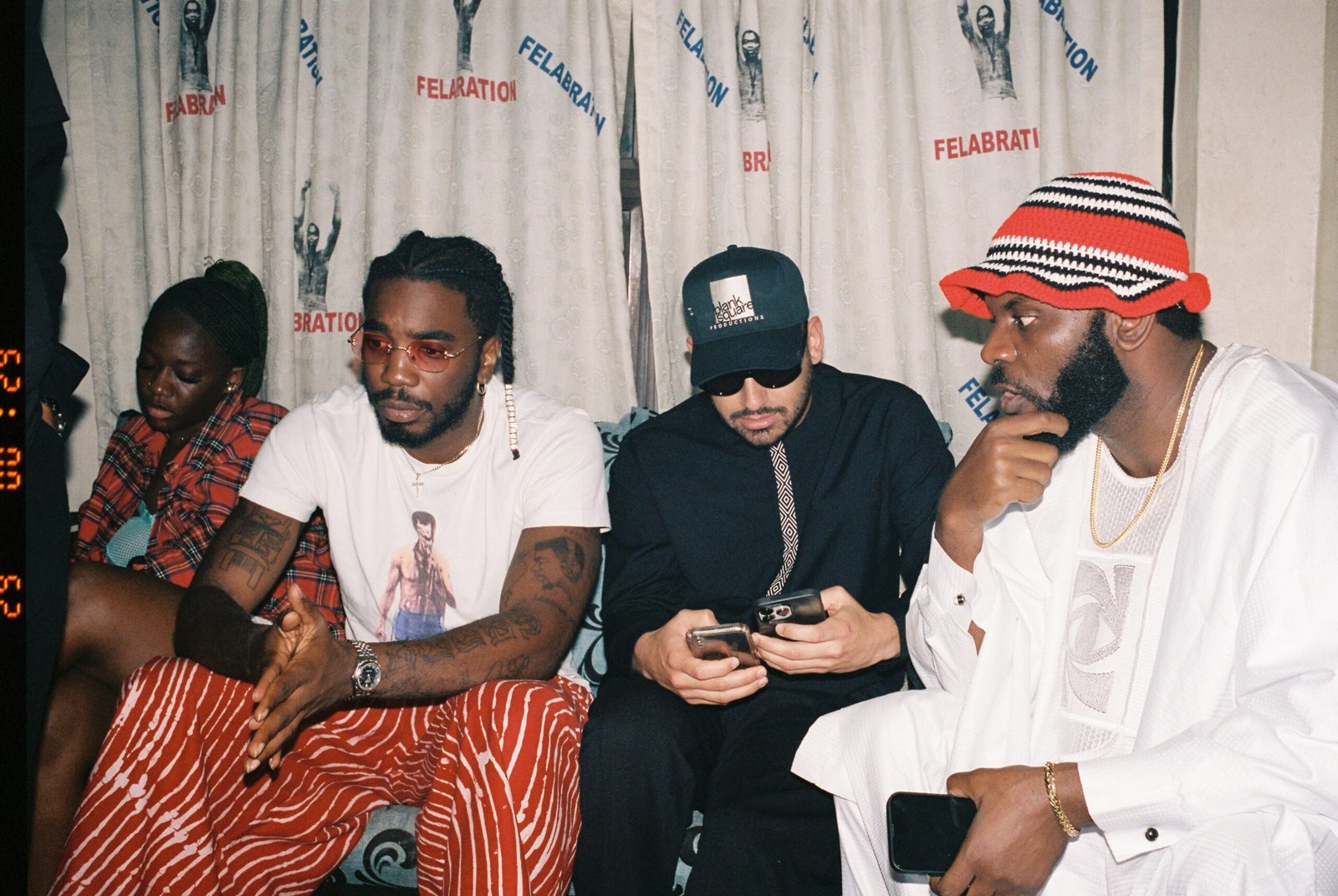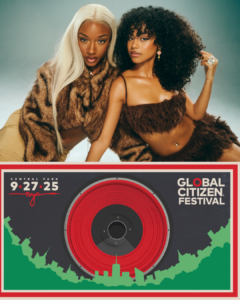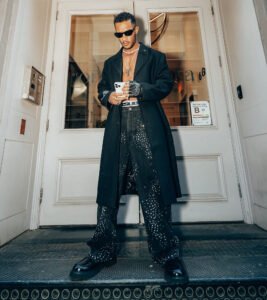THE CONNECTOR
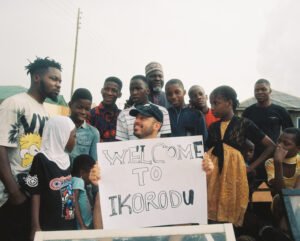
Edgar Esteves stands at the forefront of a cinematic revolution, his lens stitching together the vibrant energy of Africa and its diaspora through groundbreaking music videos. From collaborating with global icons like Wizkid and Davido, to capturing cultural moments that
transcend continents, Esteves has mastered the narrative of unity through artistry. This edition of Rolling Stone Africa, themed around “Building Bridges Between Africa and the World”, shines a spotlight on his journey, an odyssey where productions and films become conduits for global connection and cultural celebration.
It began in 2019, when Edgar directed All I Want for Russ featuring Davido, his first deep dive into Afrobeats, then followed by the viral Blow My Mind with Davido and Chris Brown. That project not only crossed musical boundaries, it sparked a grassroots cultural sensation when the Ikorodu Bois recreated it with a smartphone and household props. Captivated, Edgar reached out, and today, they are co-creating a scripted film about the Bois’ inspiring journey. Becoming a U.S. citizen and visiting Lagos revealed a powerful duality, culture shock entwined with a deep sense of belonging. It was there that Edgar forged real connections on the ground, and rediscovered his creative roots shooting Asake’s 16 mm 2:30 video, described by his team as “the next Michael Jackson of Africa”. Through intimate yet cinematic storytelling, Esteves doesn’t just depict artists, he becomes one, weaving their truths into visuals that resonate worldwide.
Esteves believes that art, especially music video storytelling, can achieve what words and politics cannot, it moves hearts, fuels hope, and plants seeds of change. On sets like Asake’s Active with Travis Scott, his multinational teams, Venezuelan-American directors, Jamaican
producers, Chinese coordinators, Russian designers, embodied this ethos, proving that film is a
true bridge-builder. For Edgard, working with African artists is a creative reset, a return to fearless, resourceful filmmaking. From zero-budget smartphone shoots to high-energy, low-cost productions in Lagos, he’s rediscovered his core, vision over resources. His most profound collaborations, particularly with Asake, have reshaped his life, deepened his spiritual connection, and forged bonds that transcend film.
As the global appetite for African music surges, Esteves stands ready, eager to tell richer stories, from Fela-inspired narratives to diaspora-honoring cinema. With the Ikorodu Bois, he is already creating Western-style films rooted in authentic African voices. Edgard Esteves doesn’t just cross borders, he makes the whole world his home, using film as a tool to amplify the soulful power of underrepresented culture.
EXCLUSIVE INTERVIEW
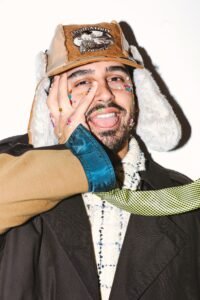
RSA: You’ve worked with some of the biggest names in African music, including Wizkid. What initially drew you to collaborating with African artists?
E.E: In 2019, I directed a video for my long-time collaborator Russ called All I Want featuring Davido. At that time, I didn’t really know much about Afrobeats. Shortly after, Davido reached out for another visual, Blow My Mind with Chris Brown, whom I’d also worked with years
earlier. That video turned out to be a huge cultural moment between Africa and America. Then the Ikorodu Bois recreated the video using just their creativity, a smartphone, and household items. I reached out to them, wanting to build something together. Ironically, years later, we’re now working on a scripted film about their life story.When I finally became a U.S. citizen, one of my first trips was to Lagos. It was eye- opening, a mix of culture shock and a feeling of belonging I didn’t expect. Spending time with the Bois and their community made me understand just how impactful that video was.
Soon after, someone I knew from Empire Records, Alexa, who at the time managed an artist signed to my label and now manages Asake, reached out about a new project. She described Asake as “the next Michael Jackson of Africa.” We shot 2:30 together on 16mm film, and working with him pushed my creativity in ways I hadn’t experienced before.
RSA: Your visual style often feels intimate yet cinematic. How do you approach telling an artist’s story, especially across cultural and geographic lines?
E.E: My videos are like my diaries. In the past three years, I’ve been to Africa about ten times, visiting Nigeria, Botswana, Egypt, South Africa, and Ethiopia. When I approach an artist’s story, I try to become them. We have transparent conversations, and my goal is to honor their truth while also bringing something fresh so the work doesn’t just succeed in the moment, it resonates globally as Afrobeats keeps growing beyond borders.
RSA: As someone who bridges continents through visuals, what do you think music videos can do that words or politics sometimes can’t?
E.E: To me, art might be Africa’s biggest export. It’s a voice, it’s hope, it’s freedom, it’s culture. A music video can inspire a young boy or girl who will one day lead a country, or at the very least, lead their own life differently. These visuals reach people on an emotional level
that policy debates often can’t. We have a platform and a voice, and I think it’s our responsibility to use them to bring more positive energy into the world.
RSA: In a world that often feels divided, what role do you believe art and storytelling, particularly film, play in building cultural bridges?
E.E: Unity.When we worked on Asake’s Active video featuring Travis Scott, the team itself was living proof of that. It was directed by me, a Venezuelan-American, with co-directors from El Salvador and Moldova. Our producer was Jamaican. Our production coordinator was Chinese. Our production designer was Russian. It was a beautiful thing to watch so many cultures come together, bringing their own perspectives without ego to create something special. That’s the power of film. It shows what’s possible when people are willing to collaborate, listen, and build something bigger than themselves.
RSA: You’ve worked across genres and regions. How does working with African artists challenge or expand your creative process?
E.E: It reminds me to stay resourceful. When I started, I’d pick up a camera and shoot a video with zero budget and no worries about
money. I got a little jaded living in Los Angeles, where you have prop houses bigger than Walmart and every tool at your disposal.
When I went to Africa and spent time with the Ikorodu Bois, I realized I needed to get back to how my career began, fearless and innovative. It pushed me to remember that creativity isn’t about resources; it’s about vision.
RSA: What has been your most meaningful moment working with an African artist, and why did it resonate so deeply with you?
Every experience I’ve had with Asake.
E.E: He’s changed my life for the better, brought me closer to God, and inspired me in ways that go far beyond work. Just watching him be himself and chase his dreams has taught me so much. There’s a growing global appetite for African music and culture.
RSA: From your perspective behind the camera, how is that momentum shaping the global creative landscape?
E.E: It’s opening the world up to untold stories and perspectives we haven’t seen enough of. Imagine a Fela Kuti biopic, that’s just one example of how much richness there is to explore. Afrobeats is taking over. The diaspora is more connected than ever. Africans are
everywhere, and they’re bringing their culture with them. It’s a beautiful thing. They’re a force, and if you’re not paying attention, you’re sleeping.
RSA: Looking ahead, what kind of stories do you hope to tell next, especially ones that bring people from different worlds closer together?
E.E: I’ve developed a close bond with the Ikorodu Bois and their family, and I want to bring more
Western-style films into African stories, sharing my perspective as a filmmaker and as a
human being. I hope to do this everywhere. Because I never felt like I had a home, I’ve decided to make the world my home, and help amplify underrepresented voices wherever I go.

